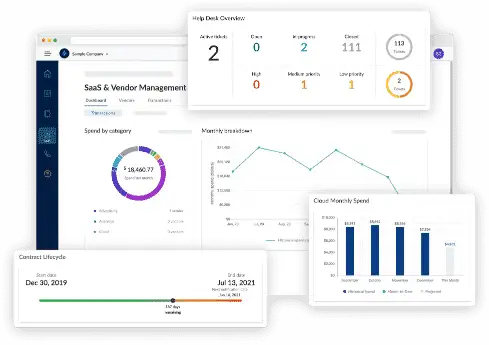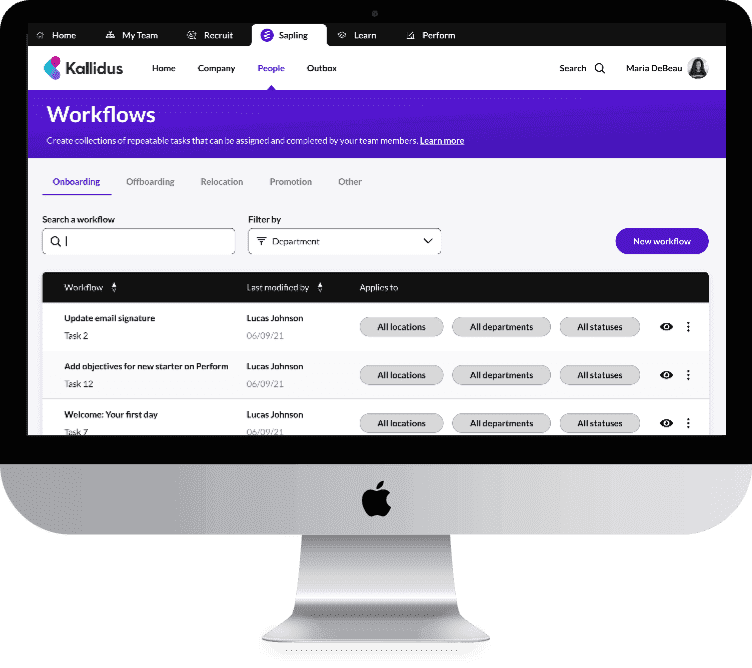Life is no bed of roses, and web development is no different.
From startups to mid and large-sized companies, it is not only about hiring a web developer, and the game is on. Multiple other factors play a crucial role in web development.
You have to make critical decisions, make trade-offs, deal with unexpected bugs, and face severe financial issues. According to Grand View Research, the U.S. Web 3.0 market was valued at $389.5 million in 2022, and it’s projected to grow significantly, reaching several billion dollars by 2030, driven by a 49.2% compound annual growth rate (CAGR). So, the bigger the market is, the bigger the challenges are on your way.
Hence, managing the challenges on the way to web development requires you to be technically sound or have professional web development experts in your team. Only the professionals are capable of pulling you out of the fire and keeping your web development on track.
So, this article is all about the challenges startups face in web development. Not only challenges, but we will also make you aware of solutions. Thus, it is compulsory to stay with us till the bottom line of this article.
Top Web Development Challenges and Solutions

No Clear Vision and Requirements
What can be worse than not knowing what you are onto? This is the biggest issue startups face. Startups rush into development with a rough idea and no clear goals. Hence, a product or service is bound to fail without any detailed plan.
Going into web development with a vague idea leads to scope creep, shattered deadlines, and a bad user experience.
How to overcome?
- A startup shall always begin its journey with an MVP. A minimum viable product is the smallest version of your idea that comprises some core features of the idea.
- Utilize user stories to have a better understanding of what your target audience wants.
- Go for the visualization of what you are trying to build using wireframes and mockups.
- Give a presentation to your client and get feedback to refine the idea before initiating the coding phase.
Choosing the Right Tech Stack
Suppose your car breaks down, and you call the mechanic. He comes with the tools, but for bike maintenance. Will it work? Never.
Similarly, in web development, you have to be vigilant about choosing the right tech stack for building a web application. From the long list of web development frameworks, you have to choose the one that works best for the given requirements.
React, Vue, Angular, Node.js, MongoDB, SQL, and much more. Thus, if you choose the wrong stack, sorry to say, but you will be in deep water.
How to overcome?
To overcome this situation, you first need to evaluate the tech stack on the basis of scalability, community support, and development speed. Moreover, it is always good to choose popular tech stacks as they are established and have a long list of libraries and tools that support you in development.
For example, you can choose React for frontend development, Node.js or Django for backend, and choose PostgreSQL or MongoDB for database.
Issues in Hiring Talented Developers
In the field of web development, there is no such challenge of a talent gap. The web development industry is filled with extremely talented and well-versed developers who build top-notch and modern web applications easily. However, the issue lies in your ability to hire the right talent.
The first issue that pops up is the budget constraint of hiring professionals. If a startup is short of budget, it will have to compromise on the talent. Another issue is being a non-technical founder of the startup. This means that you have no technical knowledge and zero expertise in hiring developers.
So, suppose you hire the wrong developer, what will be the consequences?
How to overcome?
Let’s address the budget issue first. If you are short on budget:
- Hire a freelance developer. A freelancer charges you less compared to in-house or onshore developers.
- If hiring freelancers is not the solution, you may opt to hire junior developers or interns on low salaries. You may face difficulty in this matter, too, but you can incentivize them by offering equity or performance-based bonuses.
If you are a non-technical person:
- Being a non-technical person and running a tech startup is not an odd thing. All you need to do is bring in a technical co-founder or CTO.
- Let the technical co-founder or CTO handle the chaos of hiring a technical workforce for the project.
Browser and Cross-platform Compatibility
Another challenge that startups face is browser and platform compatibility. While building a web application, you need to ensure that it runs on all browsers, platforms and provides similar performance on all screen sizes.
Such issues get worse in legacy browsers as they are not capable of loading modern layouts and features.
Moreover, your web application must also work on all operating systems if you want to grab a good audience.
How to overcome?
- Use cross-platform frameworks such as React Native, Flutter, and Xamarin if you want to get rid of such compatibility issues.
- Perform proper testing to ensure that your application runs smoothly and efficiently on all operating systems and screen sizes.
- Use simulators or real-time devices to check the performance of your application.
UI/UX Design Challenges
Professional UI/UX designers are capable of doing wonders and bringing your vision to life exceptionally well. Therefore, they charge a handsome salary that many startups can’t afford. This leads startups to compromise on the user interface and user experience, which ultimately brings the user to frustration in no time. What will happen then? Will the user stay on your site? There is a thin line between being an optimist and being unrealistic.
If your web application has a bad interface, it will elevate the bounce rate and poor conversions.
How to overcome?
- Never compromise on the design of your website because it is the first thing a user notices. Hire professional UI/UX design services from a reputable company, or hire designers capable of making an interactive interface for your site.
- Use design systems like Google’s Material Design or Apple’s Human Interface Guidelines.
- Keep the user journeys simple and intuitive.
- Use tools like Figma, Adobe XD, and Canva to create prototypes.
Time-to-Market Pressure
Startups often overcommit to get the clients or to complete the product in a short time span. Moreover, startups have to work in highly competitive environments, which creates pressure. The pressure to meet deadlines, quick releases, and earning new projects leads to hasty decisions, buggy code, and poor architecture.
How to overcome?
- Never overcommit. Commit only to the work that is possible. Never compromise on the quality under time-to-market pressure.
- Use agile methodologies.
- Work in sprints and get real-time feedback to improve your project during the development phase.
Security Risks and Data Protection
Another challenge that startups usually face because of their inexperience or negligence is security and data protection risk. Moreover, when a product is in its earlier stages, it is extremely vulnerable to cyberattacks. Plus, user data, payment info, and other things are also at stake.
How to overcome?
- While building a web application, you need to use HTTPS and SSL certificates rather than relying on HTTP. It encrypts your site, plus it is entirely free.
- Use token-based authentication, such as JWT or OAuth, to protect APIs.
- SQL injections and XSS attacks are highly vulnerable to a website. To avoid such issues, you need to sanitize inputs. This will prevent SQL injections and XSS attacks on your product.
- Protecting passwords in plain text is a disaster. Use hashing algorithms to protect your passwords.
Scalability and Performance
When a startup gets a project, most of the time, they don’t evaluate its future, which leads to several issues. An exceptionally built application may perfectly handle 100 users at a time, but struggles to handle 1000 users. Why does this happen? It is because the startup neglects the scalability and performance of the application.
Moreover, a poor backend design and database structuring can also create bottlenecks on the way to scalability.
How to overcome?
- Be modern and smart while eliminating traditional development. Choose a cloud platform like Amazon Web Services, Azure, or Google Cloud Platform with the capacity to grow with you.
- Opt for microservices for modular development and deployment.
- Implement load balancing and caching techniques.
- Optimize database queries.
Testing and Debugging
Testing and debugging of web applications is a very crucial part of the software development process. Neglecting it can create worse situations for you. Startups often neglect or don’t pay full attention to testing and debugging in the race to launch the product quickly. Hence, it results in frequent bugs, failed functionalities, application crashes, and what gets hurt the most is trust, reliability, and retention.
How to overcome?
- Prefer unit testing. Write unit tests and integration tests for key features of the application.
- Opt for CI/CD pipelines to automate testing and deployments.
- Use multiple devices and browsers for testing.
Maintaining Collaboration in Distributed Teams
As mentioned above, startups are often tight on budget, and they have to compromise on various things. To save costs and handle their processes smoothly, they overly rely on remote or offshore development, and freelancers,. Hence, they face collaboration issues as they work in distributed teams.
Managing distributed teams is itself a hassle, but with the right tools, it gets easier.
How to overcome?
- Use project management tools such as Slack, Trello, Jira, or ClickUp. This will keep everyone on the same page and synchronized.
- Conduct regular standups or sprint reviews.
- Use version control systems so everyone can view and make changes to the project.
Bottom Line
This guide covered the top 10 challenges startups face during web development. The list is long, but we chose to make you understand the core challenges and how to overcome them. Before you start your project, understand these challenges and grasp their solution to avoid future hassles. If you overcome the mentioned challenges, your life will be easier and your startup will turn into an established company.



















